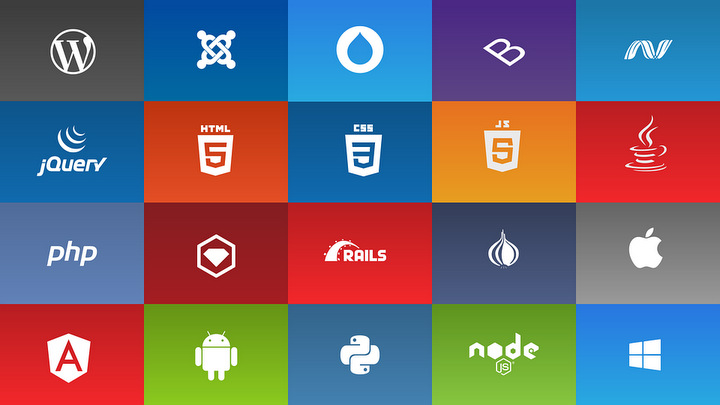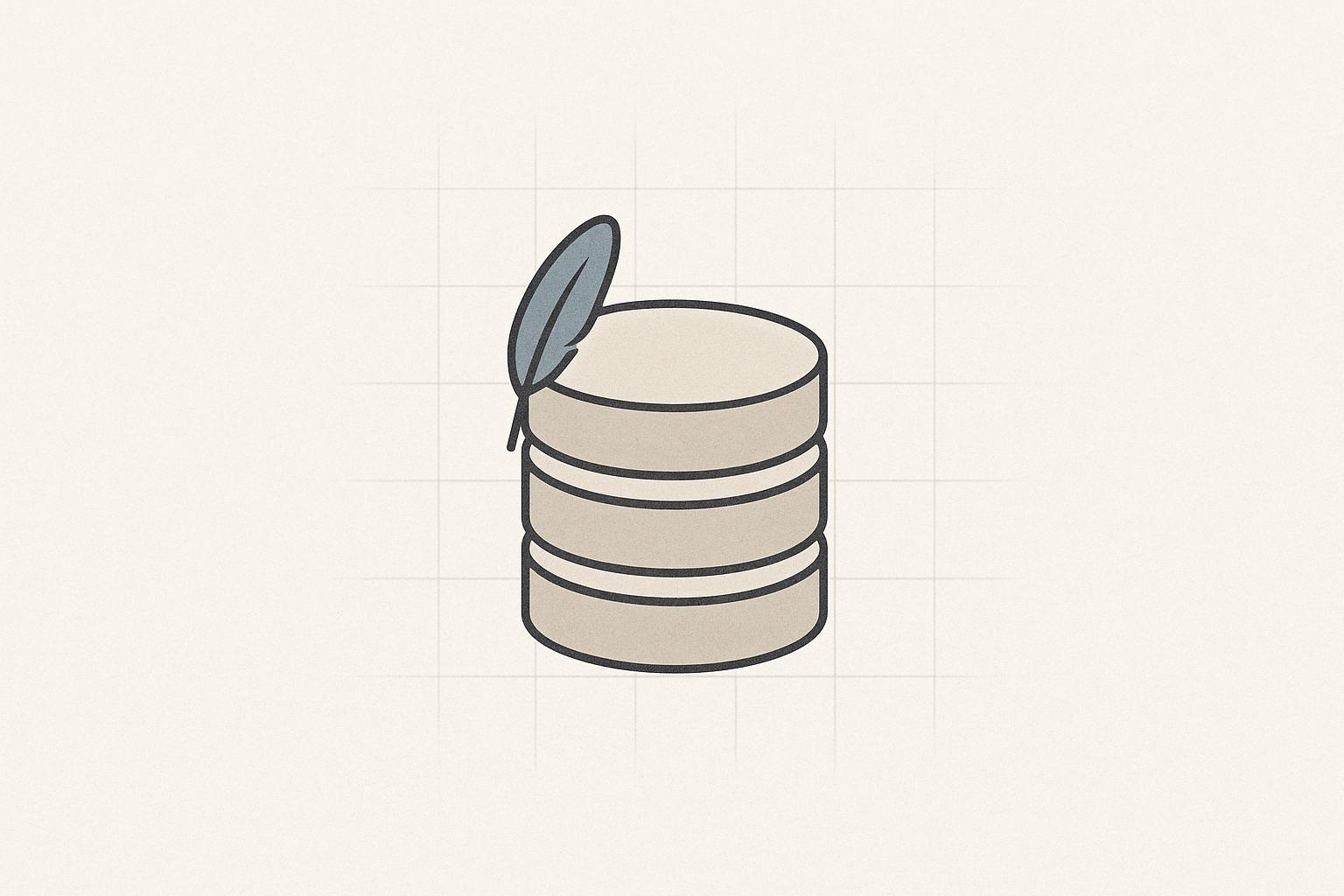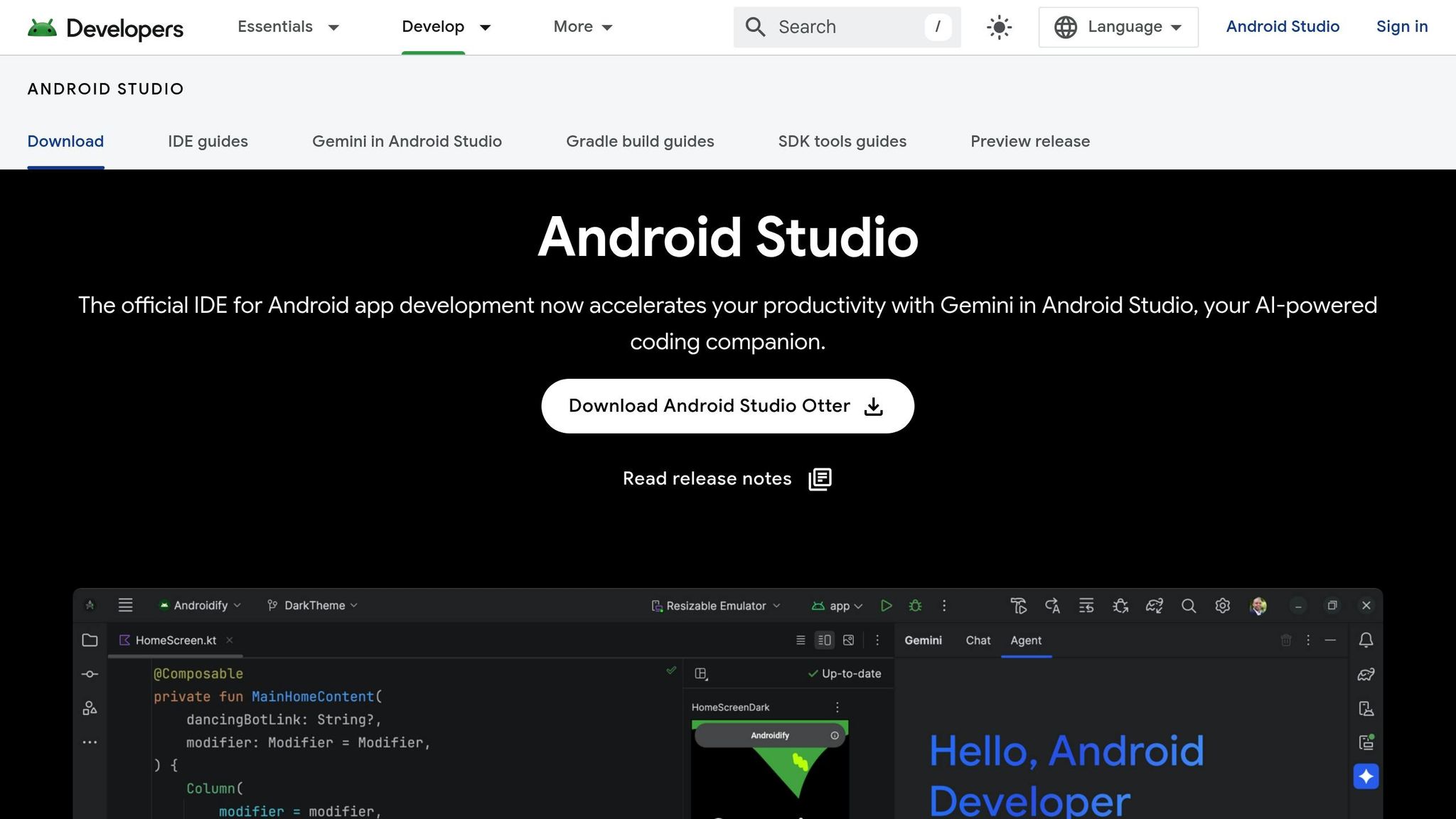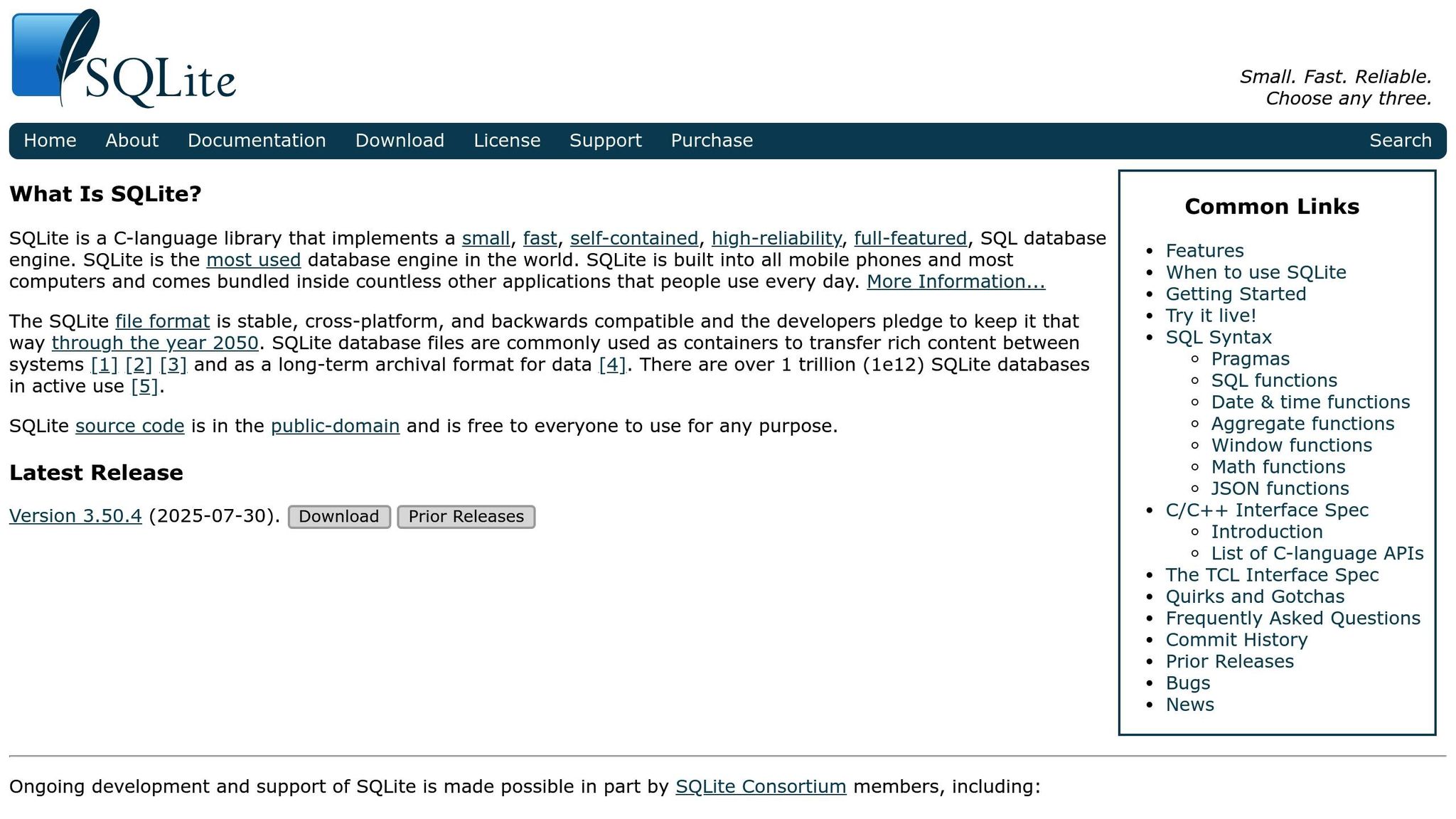A tech stack offers a structured approach to software development, leveraging existing tools, libraries, and frameworks for efficient and reliable programs. It is the optimal choice for building scalable and maintainable systems, allowing independent updates to stack components.
To compose front-end and back-end elements, the tech stack is vital. The front-end presents visual content using scripting languages like JavaScript, HTML, and CSS. The back-end manages user requests and data, involving databases (e.g., MySQL), server-side languages (e.g., Python, Ruby), and APIs for communication. The chosen tech stack influences app possibilities, customization, and resource requirements.
Main Elements of a Tech Stack:
- User interfaces, made with languages like HTML and CSS
- Programming languages, such as Python, Ruby, PHP or Java
- Frameworks, including Express, Spring and Django
- Runtime environment, including Node.js and JRE
- Servers, which include Apache and Nginx
- Databases, such as MongoDB and MySQL
In this blog, we will learn about the top 10 stacks used for software development
Top 10 stacks used for software development in 2023
1. LAMP STACK
Popular open-source software called the LAMP stack is mainly used in web development. A fully working web development environment can be created using the LAMP stack, which consists of four components. LAMP is an acronym created from the initial letters of the component names:
- Linux is the operating system that the other components run under.
- A web server programme used to deliver static web pages is called Apache HTTP Server.
- Among other things, MySQL is a relational database management system used for data warehousing, application logging, e-commerce, etc.
- Web applications are made using programming languages like PHP, Perl, and Python.
Benefits of LAMP for software development:
LAMP Stack software development offers several benefits, including:
- Open-source: LAMP Stack is available for usage and modification by anybody. This makes it the perfect option for new companies and small organisations with tight budgets.
- Flexibility: Due to its high flexibility and ability to be tailored to your company's unique requirements, LAMP Stack is a great choice. To accommodate the expansion of your organisation, you may quickly add or delete functions.
- High performance: The LAMP Stack is renowned for its outstanding performance, so even in the face of enormous traffic, your website or application will load swiftly and without a hitch.
- Large developer community: There are numerous resources available if you need assistance or support because the LAMP Stack has a sizable development community.
2. ASP.NET STACK
.NET is an open-source platform with tools, programming languages, and libraries for crafting modern desktop, web, and mobile apps. It operates smoothly across various operating systems. Supported languages include C#, F#, and Visual Basic, alongside compatible third-party options. Known for ease, code reuse, strong performance, security, and community backing, .NET is a top-tier development choice.
Benefits of .NET for software development:
The following are some advantages of.NET Stack web development:
- Cross-platform development: From lightweight web apps to robust enterprise solutions, .NET caters to all. Its standout feature lies in enabling code creation and execution across diverse platforms through a unified programming environment and toolset.
- Rich resources and libraries: Accessible libraries and user-friendly management tools are strengths of.NET. Developers may elevate their projects with a wealth of reusable open-source code, components, and modules.
- High security and reliability: Microsoft protects the security and dependability of .NET by officially endorsing it, offering recommendations, and responding to dangers when they materialise.
- Access to skilled developers: One of the main advantages of the .NET framework for years has been the big market and easy access to qualified talent. There are between 5 to 8 million .NET developers worldwide, and many of them are senior professionals with over 10 years of experience using and developing this technology. This is wonderful news for anyone trying to hire a team of .NET engineers who have a successful track record.
3. MEAN STACK
One of the most well-known technology stacks is the MEAN Stack. An entire stack of web applications can be created using it. The JavaScript language serves as the foundation for all of the technologies, despite the stack's diversity.
MEAN Stands for:
- M – MongoDB
- E – Express
- A – Angular
- N – Node.js
Benefits of MEAN for software development:
The following are the benefits of MEAN Stack software development:
- Full-Stack JavaScript: The fact that JavaScript is utilised for both the front-end and back-end of web applications is a significant benefit of MEAN stack development. This improves the effectiveness and modernity of development.
- Open Source: All of the MEAN stack's components are open source, so there are no licensing costs to worry about while using them. Additionally, it enables the customization of any component to meet unique requirements.
- Scalability: In contrast to Node.js, which is made specifically for building scalable server-side applications, MongoDB is a robust and scalable database system. For creating complex online apps, the MEAN stack is a great choice.
- High Performance: High performance is offered by MEAN stack. This is made possible by Node.js' asynchronous nature, which makes it simple for it to manage numerous concurrent connections. Furthermore, AngularJS usage speeds up the loading of single-page applications.
- Flexibility: When it comes to web development, the MEAN stack offers a lot of flexibility. This is made possible by the fact that every component is made to function together perfectly. Each component can also be used alone, enabling the selection of the best tools for a given situation.
- Improved Productivity: When developing online apps, the MEAN stack can also help to increase productivity. This is because it uses JavaScript for both front-end and back-end development. Because of this, the application's two components may be written in the same language, saving a tonne of time.
- Cost Effective: The MEAN stack is inexpensive since all of its components are open-source and free to use. Furthermore, the MEAN stack may be utilised to construct large-scale applications at a low cost.
- Improved Security: Since all of its components are open-source, the MEAN stack provides better security. This implies that a group of developers may examine the code and find any potential security holes. Utilising MongoDB also enhances the security of the data kept in the database.
4. MERN STACK
The MERN Stack is a collection of four various technologies that collaborate to create dynamic websites and web applications. It is a contraction for four different technologies as mentioned below:
- M - MongoDB
- E - ExpressJS
- R - ReactJS
- N - NodeJS
Benefits of MERN for software development:
MERN Stack software development offers several benefits, including:
- Top-Notch Web Applications: The MERN stack is optimal for companies seeking top-tier web apps. By merging high-performance and flexible technologies, it facilitates swift web app and software development.
- Open Source: MERN is a favoured pick for startups, owing to its open-source essence and global upgrades. A standout trait is its end-to-end open-source design, ensuring reliable online apps. AngularJS, an open-source frontend framework, accelerates coding with enriched HTML and JavaScript capabilities.
- Full Stack Development: MERN uses a full-stack development approach, which necessitates the creation of both the front end and the back end of an application. This strategy combines ideas from software engineering and user interface design. Due to its potential for cost savings, it has become more and more popular among startups.
- Native-Like Experience: Mobile apps built on MERN can effortlessly handle offline-online data syncing, utilise native capabilities like the camera, and monetize more easily.
- Personalised User Experience: A MERN Stack developer can take advantage of a wide range of customization possibilities, especially for the front-end platform, making it simple to modify the user experience without resorting to back-end controls. As a result, the user experience is tailored.
- Scalable & Cloud Compatible: Since data is constantly being contributed to all platforms, scalability is never a problem. MongoDB, a scalable NoSQL database compatible with cloud storage, is a component of the MERN stack. While Node.js makes the most of processing power, making platform data administration simple and accessible from anywhere in the world.
5. MEVN STACK
Like MERN and MEAN, MEVN is also a web stack, however, it is more recent due to the front-end technology it uses, Vue.JS. The front-end technology utilised in each of these stacks is different, and that is the only distinction between MEAN, MERN, and MEVN.
For the creation of user interfaces, MEVN makes use of Vue.JS, another open-source framework. Vue is quick and simple to learn, but because it is more recent, there is less community help available.
Benefits of MEVN for software development:
Some benefits of MEAN Stack software development include the following:
- JavaScript: The main benefit of MEVN is the usage of javascript at every stage of development, from client-side to server-side, which streamlines the procedure and speeds up development.
- Easier: Faster and simpler to learn is Vue.JS.
- Back-end MVC architecture: It organises the server side, making back-end development quicker and more effective.
- Independency: It is independent of platforms.
6. RUBY ON RAILS STACK
A framework for creating apps, Ruby on Rails is open-source and free. Because it is now the most well-known framework for the Ruby functional programming language, it enjoys a lot of popularity.
Benefits of RUBY ON RAILS for software development:
Some benefits of Rails Stack software development are:
- Fast Development: Ruby on Rails makes application development more rapid. Developers can quickly create app functionalities with the help of readily available frameworks and plugins (known as gems). Also, open source is a sizable portion of the code base.
- Adherence to Coding Standards: Ruby on Rails allows developers to create high-performance software applications more quickly since it adheres to standardised code and application design conventions.
- Scalability: With more user requests, Ruby on Rails performs better because, unlike client-server applications, server-side code may directly process user requests without the usage of any external web services.
- Maintenance and Testing: Model-view-controller (MVC) architecture is used in Ruby on Rails. Tests and maintenance of the code are made easier by the separation of business logic into models and views in HTML, XML, etc. Additionally, it aids programmers in using asynchronous programming methods for creating dynamic websites.
- Security: Over time, Ruby on Rails has developed. With the current stable version's numerous integrated security methods, web application developers can create programs that are resistant to hacker attacks and other vulnerabilities. The Ruby on Rails framework provides a defence against social engineering attacks, cross-site scripting, SQL injections, and other threats.
7. PYTHON STACK
Python is a high-level, all-purpose programming language that is frequently used in the creation of applications. Python is frequently used for machine learning, AI, data analysis, and scientific computing.
Benefits of PYTHON for software development:
Benefits of Python Stack software development include the following:
- Versatility: Python's wide range of applications spans web development, data analysis, scientific computing, AI, machine learning, automation, and more.
- Readable Syntax: Python's clear and intuitive syntax emphasises readability, reducing the learning curve and aiding collaboration.
- Rapid Development: Python's interpreted nature allows quick code modification and execution, promoting fast-paced development.
- Vast Library Support: Python's extensive standard library and third-party packages accelerate development by providing pre-built functionalities.
- Web Frameworks: Widely-used frameworks like Django and Flask simplify web application development with robust features.
- Community and Resources: Python boasts an active and supportive community, offering abundant resources, tutorials, and documentation.
- Cross-Platform Compatibility: Python runs seamlessly on various platforms and operating systems, ensuring broad accessibility.
8. JAVA STACK
Another extensively used enterprise-level programming language that has been around for a while is Java. It features a sizable developer community and a wealth of frameworks, libraries, and tools that make development easier. The Java programming language, the Spring framework, and a database system make up the three parts of the Java stack. Java is an object-oriented platform-independent programming language, which means that the code can execute on any machine, regardless of the operating system.
Benefits of JAVA for software development:
The following are the benefits of JAVA Stack software development:
- Platform Independence: Java's platform-independent nature enables code execution on various machines, regardless of the operating system.
- Enterprise Development with Spring: The Spring framework facilitates modular, lightweight enterprise application development, covering web, security, data access, and testing.
- Diverse Database Options: Java developers can choose from various databases like MySQL, PostgreSQL, and Oracle for their applications.
- High Performance and Scalability: Java excels in building large-scale applications demanding high performance and scalability.
- Robust Security: Java's strong security features make it an ideal choice for applications dealing with sensitive data.
9. SERVERLESS STACK
Serverless architecture, which takes care of infrastructure and server maintenance for developers, is the newest trend in software development. Because of this architecture, the developer may focus entirely on writing the application code rather than the infrastructure that underpins it.
Benefits of SERVERLESS for software development:
Some benefits of Serverless Stack software development are:
- Cost-Effectiveness: The serverless stack minimises expenses by executing functions on demand, eliminating the need to pay for unused server resources.
- Scalability: The serverless architecture seamlessly scales up or down based on the volume of requests, handling traffic spikes efficiently.
- Flexibility: Cloud providers manage the infrastructure, allowing quick adaptation to user demands and business changes without infrastructure concerns.
10. FLUTTER
Google's Flutter is an open-source framework for creating mobile applications. It has recently advanced though, and you can now use it for web building. Due to its distinctive features and advantages, the new web development trend known as Flutter for Web has grown in popularity.
Benefits of FLUTTER for software development:
Some benefits of FLUTTER Stack software development include the following:
- Code Reusability: Flutter's "write once, run anywhere" philosophy extends to the web, allowing developers to reuse a significant portion of their existing Flutter codebase for web applications.
- Consistent User Experience: Flutter's single codebase approach ensures a consistent and cohesive user experience across multiple platforms, including the web.
- Fast Development: Flutter's hot reload feature speeds up development by instantly reflecting code changes in the web app, enhancing productivity.
- Rich Widgets: Flutter provides a wide range of customizable widgets, ensuring visually appealing and interactive web UIs.
- High Performance: Flutter's compilation of efficient, native web code results in responsive and performant web applications.
Conclusion:
In the dynamic realm of software development, the tech stack you choose significantly influences your project's success. Exploring the top 10 tech stacks and their distinct advantages highlights the diversity of options available.
For custom software development, visit us at Zee Palm
For free premium front-end flutter kits, visit Flutter Coded Templates
Check out free Flutter Components, visit Flutter Components Library










